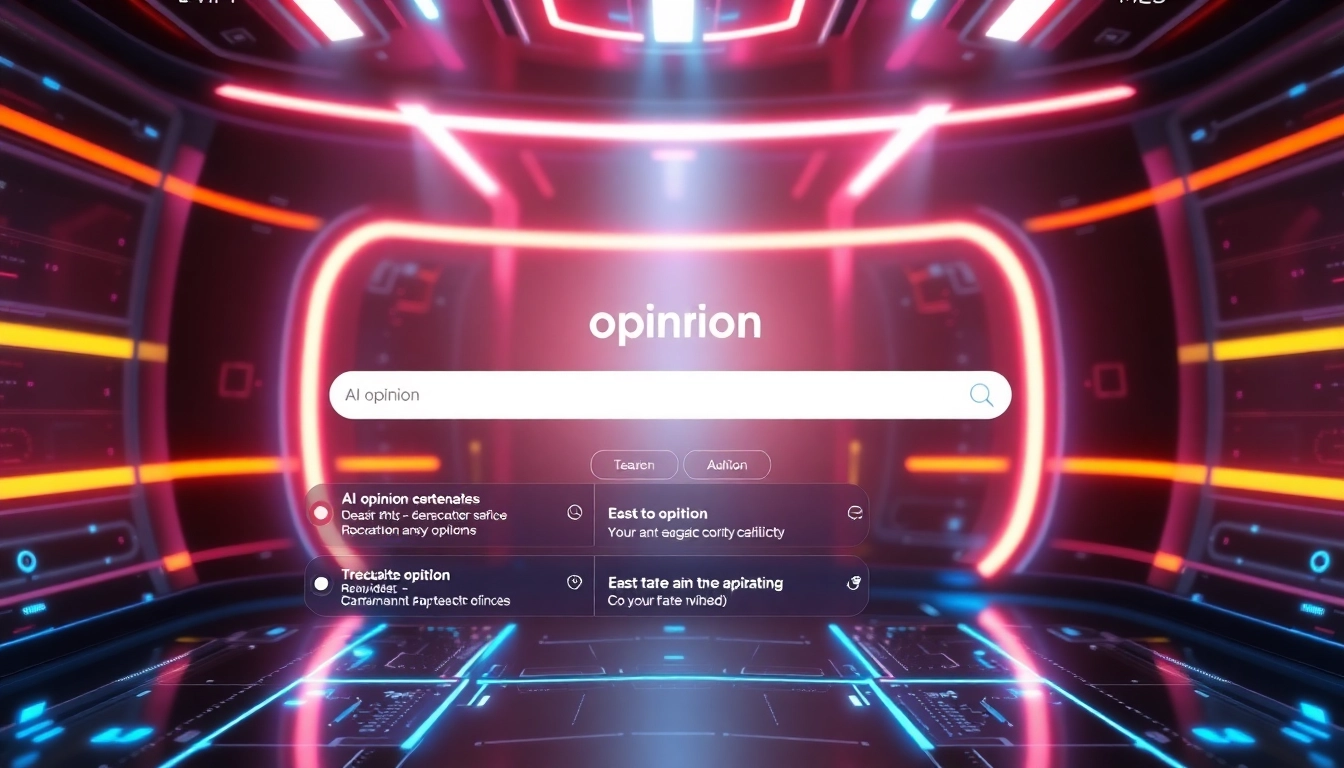Understanding Informatics: A Foundation for Success
In today’s digital age, as data continues to explode in volume and complexity, the realm of https://www.informaticsview.com plays a pivotal role in transforming the way we leverage information to foster innovations and improve operational efficiencies across various sectors. This article aims to provide a comprehensive exploration of informatics, its branches, tools, and the best practices necessary for effective implementation in today’s world.
What is Informatics? Exploring the Basics
Informatics is defined as the discipline that deals with the structure, properties, and interactions of data and information. This interdisciplinary field sits at the intersection of technology, information science, and human behavior. It encompasses the study, design, and application of information systems, particularly in how they can be optimized for human use.
Informatics is not only about technology; it profoundly influences how we interact with information. By understanding the nuanced layers of informatics, organizations can harness data in ways that support decision-making, foster communication, and drive innovation.
The Importance of Informatics in Today’s Data-Driven World
As organizations increasingly rely on data-driven approaches to conducting business, the role of informatics has never been more crucial. Informatics enables organizations to potentiate insights derived from vast amounts of data, thereby facilitating timely and informed decision-making. The imperative to capitalize on information flows across various domains—including healthcare, education, finance, and technology—demands informed specialists who can translate complex data sets into actionable insights.
In a world where competition pivots on knowledge and agility, informatics drives business strategies, enhances customer engagement, and optimizes resources effectively. Consequently, fostering a deep understanding of informatics principles equips professionals with the tools needed to excel in their respective fields.
Key Concepts and Terminologies in Informatics
To navigate the evolving landscape of informatics successfully, it is essential to grasp some foundational concepts and terminologies:
- Data: Raw facts and figures that can be processed to yield meaningful information.
- Information: Processed data that is organized in a context to make it useful.
- Knowledge: Understandings derived from information that can inform decisions and actions.
- Information Systems: Structured systems for collecting, storing, and processing data.
- Health Informatics, Business Informatics, and Bioinformatics: Specialized branches focusing on specific sectors and applications of informatics.
Different Branches of Informatics: From Health to Business
Health Informatics: Improving Patient Care
Health informatics focuses on utilizing data and information technology to enhance patient care. This field encompasses a variety of applications, from electronic health record (EHR) systems to telemedicine solutions that improve access to care. By leveraging health informatics, healthcare providers can ensure accuracy in diagnosis, improve patient safety, and streamline workflows.
For instance, clinical decision support systems (CDSS) enable healthcare professionals to make more informed decisions based on an extensive analysis of patient data. Moreover, these systems integrate data across platforms, ensuring that all relevant patient information is available at the point of care, which significantly reduces the risk of errors.
Business Informatics: Driving Operational Efficiency
Business informatics applies the principles of informatics to improve processes, enhance productivity, and facilitate decision-making within organizations. By integrating information technology with business operations, companies can make informed choices that lead to better resource utilization, reduced costs, and increased competitive advantage.
For example, data analytics tools can provide real-time insights into market trends, customer behaviors, and operational performance, allowing businesses to pivot their strategies swiftly when needed. This adaptability is critical in a fast-paced market environment.
Bioinformatics: Bridging Biology and Computing
Bioinformatics merges biological research with computer science, playing a crucial role in areas like genomics, proteomics, and drug design. This branch enables the analysis of biological data using algorithmic, statistical, and database techniques, paving the way for breakthroughs in personalized medicine and biotechnology.
An illustrative example of bioinformatics in action includes analyzing genetic sequences to support the development of targeted therapies for various diseases. By processing and interpreting vast datasets, bioinformaticians help bridge the gap between scientific research and practical healthcare applications.
Essential Tools and Technologies in Informatics
Data Management Software: Organizing Your Insights
Data management software is vital for organizing, storing, and retrieving information efficiently. Common tools in this realm include database management systems like MySQL, Oracle, and Microsoft SQL Server. These technologies help manage large data sets, allowing users to perform complex queries and retrieve specific information quickly.
Moreover, data warehousing solutions facilitate the integration and consolidation of data from different sources, offering users a unified view of their information landscape. As such, organizations can rely on comprehensive, consistent data to inform their strategies and operations.
Analytics Tools: Making Sense of the Data
Analytics tools are essential for interpreting data and generating insights. Popular platforms such as Tableau, Power BI, and Google Analytics provide visualization capabilities that help users understand trends, patterns, and anomalies within their datasets. By transforming complex data into visual representations, these tools empower stakeholders at all levels to make data-driven decisions.
For instance, advanced analytics technologies, including machine learning and artificial intelligence, can sift through large volumes of data to identify patterns and predict future outcomes. Adopting such technologies is increasingly becoming a competitive necessity in various industries.
Emerging Technologies in Informatics: What to Watch
The field of informatics is dynamic, with several emerging technologies poised to reshape how data is managed and analyzed. Key areas of focus include:
- Artificial Intelligence (AI): Enhancing data processing capabilities and enabling predictive analytics.
- Blockchain: Providing secure, decentralized data management solutions, particularly in sectors like healthcare and finance.
- Cloud Computing: Facilitating scalable data storage and processing capabilities, allowing organizations to harness vast amounts of information on-demand.
- Internet of Things (IoT): Generating real-time data from connected devices, offering opportunities for immediate insights and responses.
Best Practices for Implementing Informatics Solutions
Establishing Clear Goals and Metrics
Successful implementation of informatics solutions begins with clearly defined goals. These objectives should align with the broader strategy of the organization and be measurable to assess the effectiveness of the informatics initiatives. Setting benchmarks and key performance indicators (KPIs) allows stakeholders to monitor progress and make data-informed adjustments as needed.
Collaborating Across Departments for Integrated Solutions
Informatics initiatives often span multiple departments, making cross-departmental collaboration essential. By leveraging diverse expertise and perspectives, organizations can develop integrated solutions that enhance workflows, improve efficiency, and maximize resources. Establishing a culture of teamwork fosters innovation and ensures that informatics strategies align with organizational objectives.
Continuous Improvement and Lifelong Learning
As technologies and methodologies evolve, organizations must embrace a mindset of continuous improvement and lifelong learning. Regularly evaluating and updating informatics strategies ensures that organizations remain competitive and responsive to shifting needs. Additionally, investing in professional development for team members enhances their skills in new technologies and methodologies, fostering a culture of adaptability and agility.
Challenges in Informatics and How to Overcome Them
Data Privacy Concerns: Balancing Access and Security
One of the primary challenges in informatics is balancing the need for data access and the need to secure sensitive information. Stricter regulations, such as GDPR and HIPAA, enforce stringent data privacy requirements that organizations must navigate. To address these risks, organizations can implement robust data governance frameworks, encrypt sensitive information, and conduct regular audits of data access controls.
Integration Issues: Breaking Down Silos
Integrating disparate data systems can be complex, often leading to siloed information that undermines the effectiveness of informatics initiatives. To mitigate these integration challenges, organizations should adopt interoperable data standards and invest in centralized data management solutions. Emphasizing collaboration across departments is also crucial to ensuring data compatibility and usability.
Keeping Up with Evolving Technologies
The rapid pace of technological advancement presents another challenge for organizations striving to implement effective informatics solutions. Staying informed about emerging trends requires a proactive approach—organizations should foster an environment that encourages exploration and experimentation with new technologies. Establishing partnerships with industry-leading technology providers can also provide organizations with valuable insights and updates on the latest advancements.
Conclusion
Informatics is undeniably a cornerstone of modern data-driven strategies across various sectors. By understanding its core principles, exploring its diverse branches, and adopting best practices for implementation, organizations can harness the power of informatics to drive innovation and improve operational efficiencies. Navigating the challenges within this dynamic field necessitates vigilance, continuous learning, and a commitment to data governance and security, positioning organizations to succeed in an increasingly complex and data-centric world.



